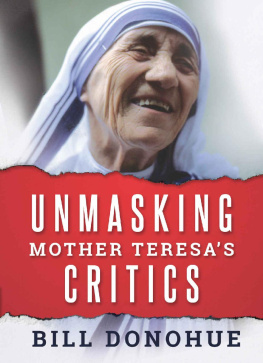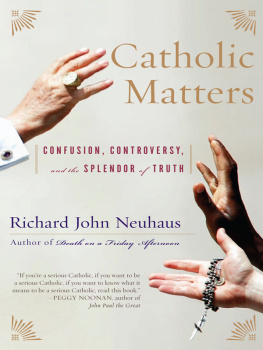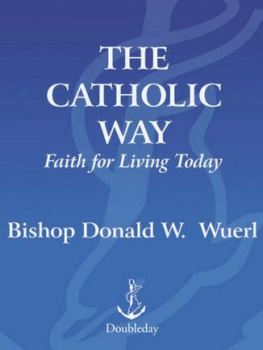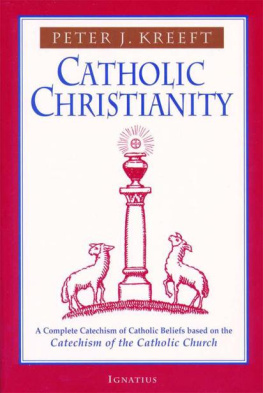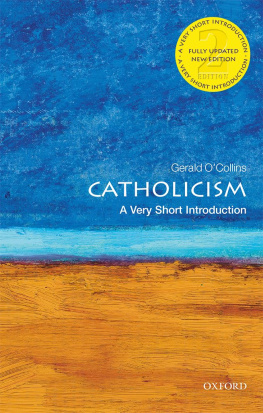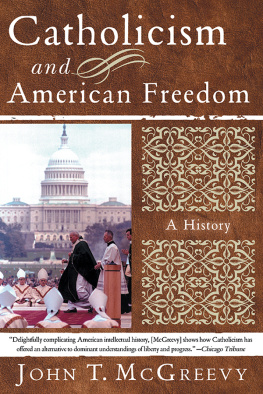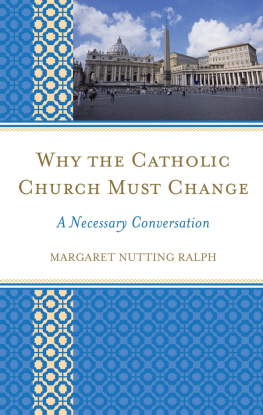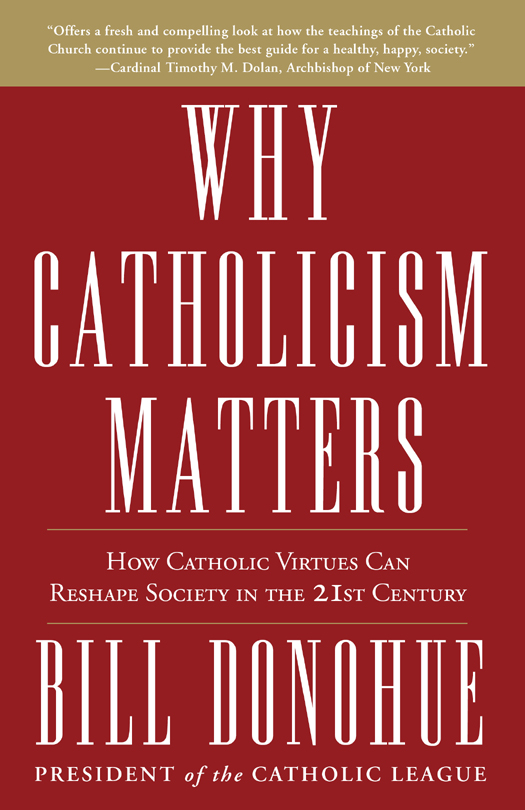Copyright 2012, 2013 by Dr. William Donohue
All rights reserved.
Published in the United States by Image, an imprint of the Crown Publishing Group, a division of Random House, Inc., New York.
www.crownpublishing.com
IMAGE is a registered trademark, and the I colophon is a trademark of Random House, Inc.
Originally published in hardcover in slightly different form in the United States by Image, an imprint of the Crown Publishing Group, a division of Random House, Inc., New York, in 2012.
Cataloging-in-Publication Data is on file with the Library of Congress.
eISBN: 978-0-307-88535-7
Jacket design by Laura Duffy
v3.1_r1
For Father Philip K. Eichner, S.M.
C ONTENTS
I NTRODUCTION
T he quest for the good society has intrigued philosophers down through the ages. It has also been the object of radical pursuit on the part of activists and revolutionaries. It is hardly an exaggeration to say that almost all of these efforts have been an utter failure. Most of them failed because their ideas were inherently flawed. Others failed because their ideas, however practical and endearing, never took root; they were therefore destined for a short life. The few exceptions, such as the efforts of the Founding Fathers, were confined to the political sphere; in their case, the crafting of a government providing for liberty, while stunning, left most aspects of the good society unaddressed.
If there is one institution that embodies the right recipe for the makings of the good society it is the Roman Catholic Church. Its teachings, especially those that have a public impact, are as well suited to answering todays social problems as they were two thousand years ago. If only they were followed. But if the Churchs teachers, namely the clergy, have often had a hard time following its teachings, not only can we expect somewhat less from among the faithful, but we cannot be surprised to learn that no society has ever succeeded in implementing them. That, however, is no excuse for not trying.
It is more important now than ever before that we accept the challenge that Catholicism poses. The conditions in the third millennium are not auspicious. Not only do war, ecological disaster, poverty, and illness threaten to destroy civilization, the West seems to have lost its moral compass. All of which means that we must make some hard choices. Not only is Europe, once the bastion of economic and scientific achievement, sliding backward, it is morally deracinated; regrettably, it has rejected its own glorious heritage in the name of multiculturalism. Although there are signs that a reality check has been delivered, for example, the heads of state in England, France, and Germany have become vocal critics of multiculturalism, the preoccupation with radical individualism continues, and the net losers are the people who have lost how community binds them.
Matters are not much better in North America, where social solidarity has waned and moral anarchy is cresting. It is hardly controversial to note that Canada and the United States suffer from many of the same economic, social, and cultural conditions that plague Europe. Enter the Catholic Church. Its teachings, its rich heritage, and its enormous individual and collective contributions provide an opportunity to rebound, and God knows the entire planet needs a moral reboot. In essence, this book is an attempt to persuade the reader to give Catholicism a chance.
There are many visions of the good society, but it is hard to improve on the one found in the Preamble to the U.S. Constitution. It is a vision of a society where justice, domestic tranquility, the common defense of the people, their general welfare, and the blessings of liberty reign supreme. It may be other things as well, but it most assuredly envisions these conditions.
What made the psychic revolution a success is the heart and soul of Catholicisms central contribution to the modern world: the preeminent role it affords the faculty of reason, and the nobility of its goal, namely, the pursuit of truth. Absent an awareness of how these attributes constitute the nucleus of Catholic teachingsthey are its most defining markersall the good that the Catholic Church has done is impossible to appreciate.
As already indicated, if the quest for the good society is to succeed, it cannot do so by resting on righteous teachings; the teachings must be institutionally anchored. The Catholic Church wins on this score hands-down. Indeed, any institution that has spanned almost two centuries, amidst internal
If the early Church was made of autonomous tiny communities, todays Church is enriched by hundreds of thousands of parishes throughout the world. There is a famous saying in American politics, attributable to former House Speaker Tip ONeill, that all politics is local. It can also be said that in the Catholic Church, all religion is local. To be sure, Catholics in every nation recognize the authority of the pope as the leader of their world body, but what they identify with most is their own parish. There is no other institution on the face of the earth that can match the Catholic Churchs unique blend of hierarchical and communal attributes. These attributes not only play an integral role in determining its success, they account for why Catholics are able to ride out scandals that touch the hierarchy.
To give but one example of how the organizational apparatus of the Catholic Church is a plus, consider what our society would look like today without the university.
The University
The towering figures in ancient Greece and Rome bequeathed to us a stunning array of scholarship, but they never created a single university. That work was accomplished by the Catholic Church. It was in the monasteries, dating back to the first millennium, that the university was first born. The contribution that Irish monasticism made in preserving the great works of the ancient world was particularly impressive, and in this regard the evangelizing work of Saint Patrick was seminal. Were it not for this Irish-Christian effort, the barbarian stamp on Western civilization would have been hard to defeat. Credit is due to the Irish monks who attracted students from many parts of Europe who were eager to learn, and to a subset among them who traveled to the continent founding monasteries in the great cities of Europe. Had they not prevailed, it is difficult to see how classical Greek and Roman literature would have been able to survive.
The Catholic university was not a place for meditation, or for the exclusive study of theology; it was a venue for creative thinking. It featured a curriculum consisting of disciplines that roughly approximate what we call the liberal arts today. Students learned from Aristotle and Cicero, drawing on their philosophical genius as a bedrock for Christian thought. Canon law was, of course, studied, but so was civil law. Most important, the papacy played a central role: were it not for several popes who intervened against those who sought to deny academic freedom, the course of learning in the time to come would have been stifled. One of the first universities in history, the University of Paris, flourished because of Pope Gregory IX: he blocked attempts by ecclesiastical authorities to compromise the autonomy of this citadel of higher education.
Historian Thomas E. Woods, Jr. points to another significant element in the role of the Catholic Church in higher education, and that is its unyielding devotion to the study of logic. From the beginning, Catholic education at the highest levels was anything but rote learning. The medieval study of logic, writes Woods, provides additional testimony to the medievals commitment to rational thought. And since rational thought was the vehicle by which truth was ascertained, it is easy to see how religious and secular ideas were seen as complimentary in nature. In this environment serious ideas could be developed.


